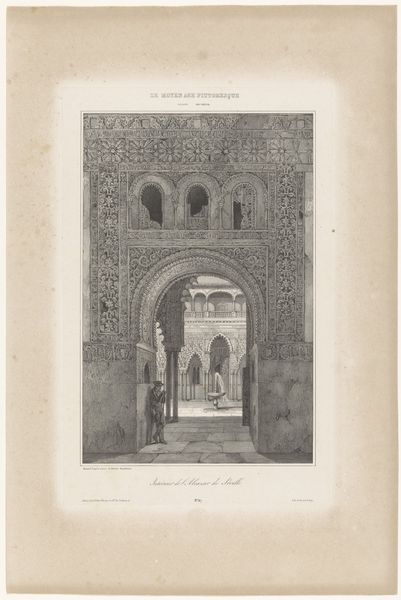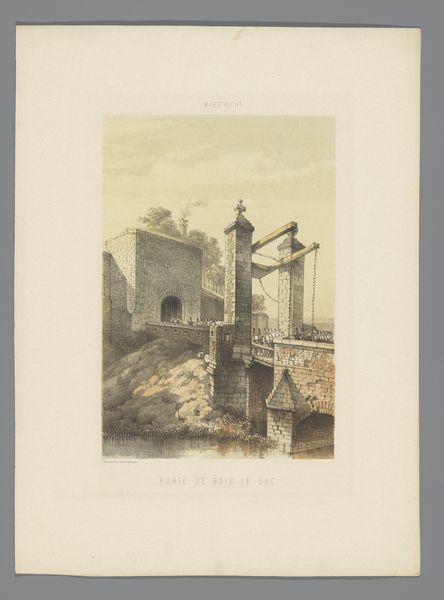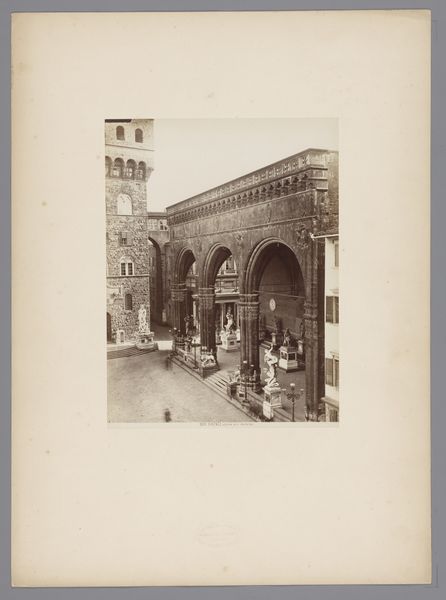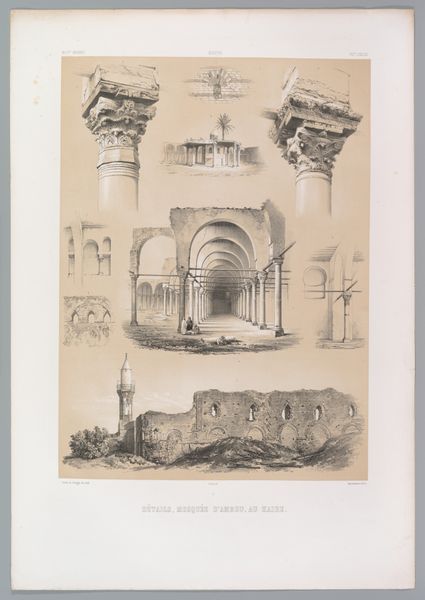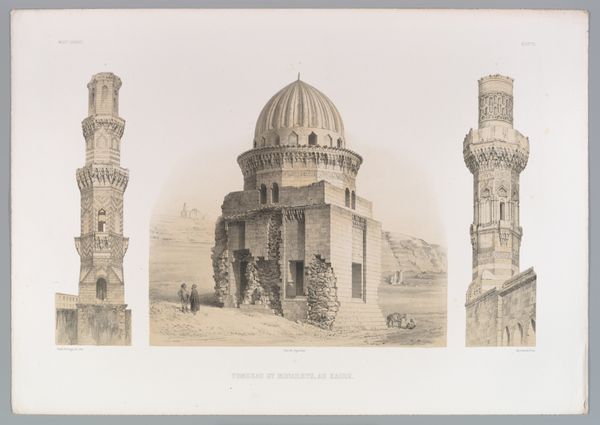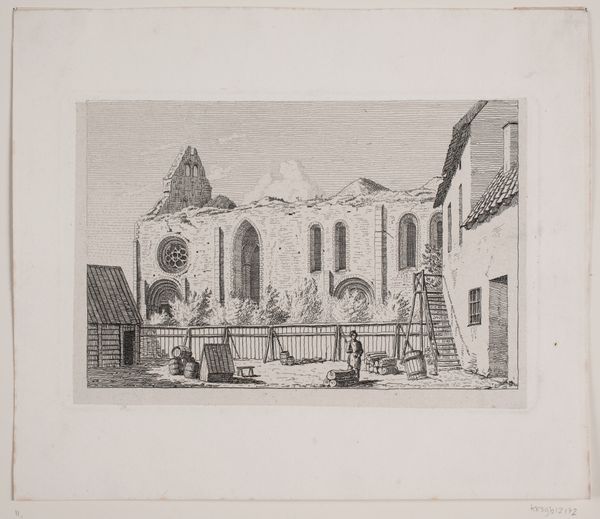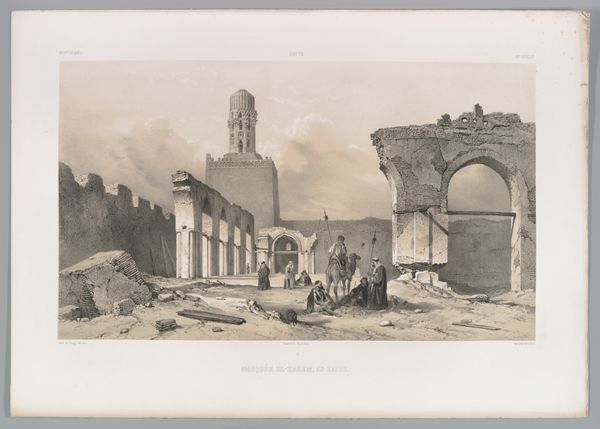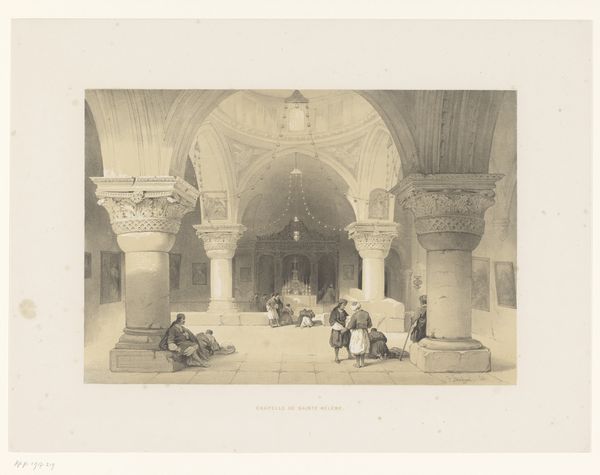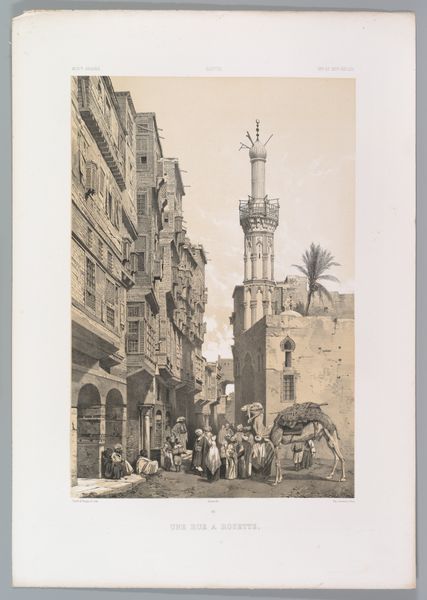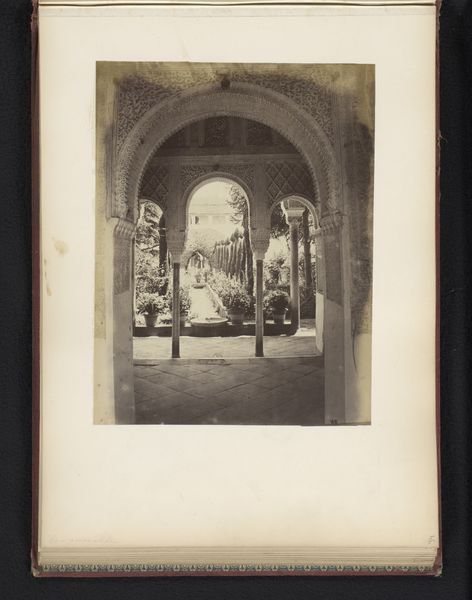
drawing, print, paper, ink, architecture
#
drawing
# print
#
landscape
#
paper
#
ink
#
cityscape
#
islamic-art
#
architecture
Dimensions: Sheet: 22 3/8 × 15 5/8 in. (56.9 × 39.7 cm)
Copyright: Public Domain
Editor: This is "4. Mosquée d’Amrou, au Kaire," a drawing and print by Joseph-Philibert Girault de Prangey from 1843. I'm struck by the way the artist uses ink on paper to depict this architectural space, but what truly stands out is the human element – people seem to be at leisure within a structure intended for solemnity. What are your thoughts when you look at it? Curator: It's crucial to recognize the socio-economic factors driving this piece's creation. The paper, the ink, the very act of creating a print – these were not neutral choices. How did Girault de Prangey gain access to this mosque, and who was his audience? Was this print intended to be circulated amongst European elites, furthering Orientalist narratives? Think about the labor involved, from the manufacturing of the materials to the creation and distribution of the final product. Editor: That’s a good point about the social and economic aspects. I was focused on the figures, but now I wonder about the colonial implications. How does focusing on the materials help us see that more clearly? Curator: Examining the print's materiality reveals the network of resources and power relations at play. The artist isn't just depicting a scene; they are engaging in a form of cultural appropriation. The relative ease with which a European artist could depict and disseminate images of Islamic spaces, speaks volumes about colonial power dynamics and material consumption of the "exotic." Where do we place the labor and resources of the colonized within art history, versus simply the western artist who profits? Editor: So, looking closely at the printmaking process itself helps unpack those power dynamics embedded in the artwork? I hadn't thought about it that way. Curator: Exactly. It shifts the focus from a purely aesthetic appreciation to a critical examination of how art is produced, distributed, and consumed within unequal power structures. Understanding the materials illuminates the often-hidden social and political contexts. Editor: I’ll definitely remember to look beyond the image and consider the means of production in future analyses. Thank you. Curator: Indeed. Always question the origin and the journey of materials used. Only then do we fully understand art's role in shaping our world.
Comments
No comments
Be the first to comment and join the conversation on the ultimate creative platform.
